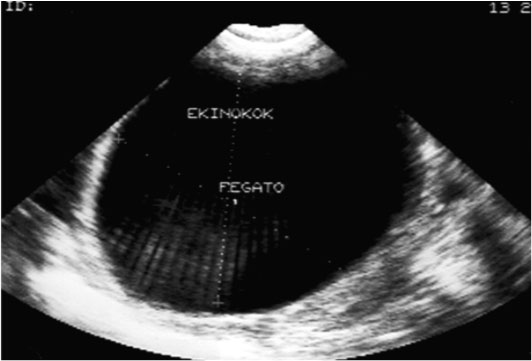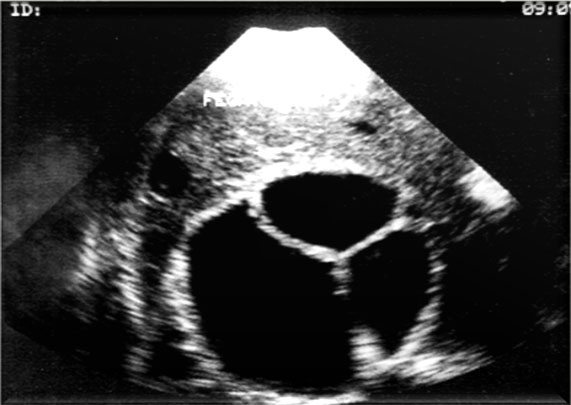Liver hydatid disease (Part one)
The disease is caused by Echinococcus granulosus and Echinococcus alveolar.
Geographical distribution
Echinococcus granulosus is found mainly in countries where sheep grazing is present, countries engaged in livestock farming and where the use of animal offal is allowed. These areas include Southern Europe, the Middle East, Australia, New Zealand particularly in Cyprus, Greece, Spain. In Albania, mainly Echinococcus granulosus is found.
Echinococcus alveolar is found in Central Europe, Russia, USA.
The disease is caused by the larval or cystic form of the parasite Echinococcus granulosus, the permanent and regular host of which is the dog. Humans, sheep, and goats are intermediate hosts.
Biological cycle
Humans are infected by dog feces mainly in childhood. The dog is infected by eating the sheep's offal containing hydatid cysts. The scolexes found in the cysts attach to the small intestine of the dog turning into mature parasites (tape worm) that attach to the host's intestinal wall. Each segment releases about 500 eggs into the intestine. The infected feces of the dog contaminate pastures and livestock grazing and breeding areas, and in this way the eggs are swallowed by sheep, pigs, and cattle.
The eggs also attach to the dog's fur from which humans can be infected both by direct contact and by eating contaminated plants. The eggs have a chitinous envelope which is dissolved by gastric juices. The newly released eggs pass through the intestinal mucosa and through the portal vein reach the liver, where the mature cyst originates. About 70% of cysts are located in the liver. Some eggs pass beyond the liver and heart and reach the pulmonary capillary bed, where they form pulmonary cysts. Thus, some eggs reach the systemic circulation becoming the cause for the formation of spleen, brain, and bone cysts.
Clinic
Echinococci develop in the liver in a cystic manner, they develop slowly and remain asymptomatic for a long time. Other clinical signs include:
- dull and stifled pain in the upper right quadrant and sometimes a feeling of abdominal tension
- hepatomegaly
- jaundice
- fever

Fig:1 echographic examination showing a hydatid cyst in the liver.
The cysts of Echinococcus granulosus have a structure with three membranes:
- Germinative (embryonic) membrane
- Endocystic membrane
- Ectocystic membrane

Fig 2. Multilocular cyst in the liver
Complications
- Intraperitoneal rupture results in the multiplication of cysts within the peritoneal cavity leading to intestinal obstruction and abdominal tension. Cysts can also rupture into the biliary tract leading to healing or cholestatic jaundice with recurrent cholangitis.
- Infection. Secondary invasion of pathogenic microorganisms following the rupture of the cyst into the bile ducts causes pyogenic abscess.
- Hydatid allergy. The cystic fluid contains a foreign protein that sensitizes the host. This can cause severe anaphylactic shock but more often causes recurrent urticaria.
- Spread to other organs. Cysts can be seen in the lungs, kidneys, spleen, brain, bones, ovaries, but massive infection in humans is rare.
Honored Doctor! I must object to your idea that there are forms of alveolar echinococcosis in Albania. It is wrong to confuse the terminology of multiple echinococcosis with multilocular echinococcosis. They are two different species and develop in different hosts
Sent by Viktor Qereshniku, më 14 January 2014 në 15:20
Dear Doctor, my father suffers from the liver. His mother died from this disease, and is it hereditary? He has gone through jaundice, in layman's terms, he has not gone to the doctor but was treated in the village by an old lady. He often has body aches and high blood pressure, 20 over 10. How is this explained? I am very worried about this fact. Please inform me
Sent by fjoralba, më 10 May 2014 në 09:25